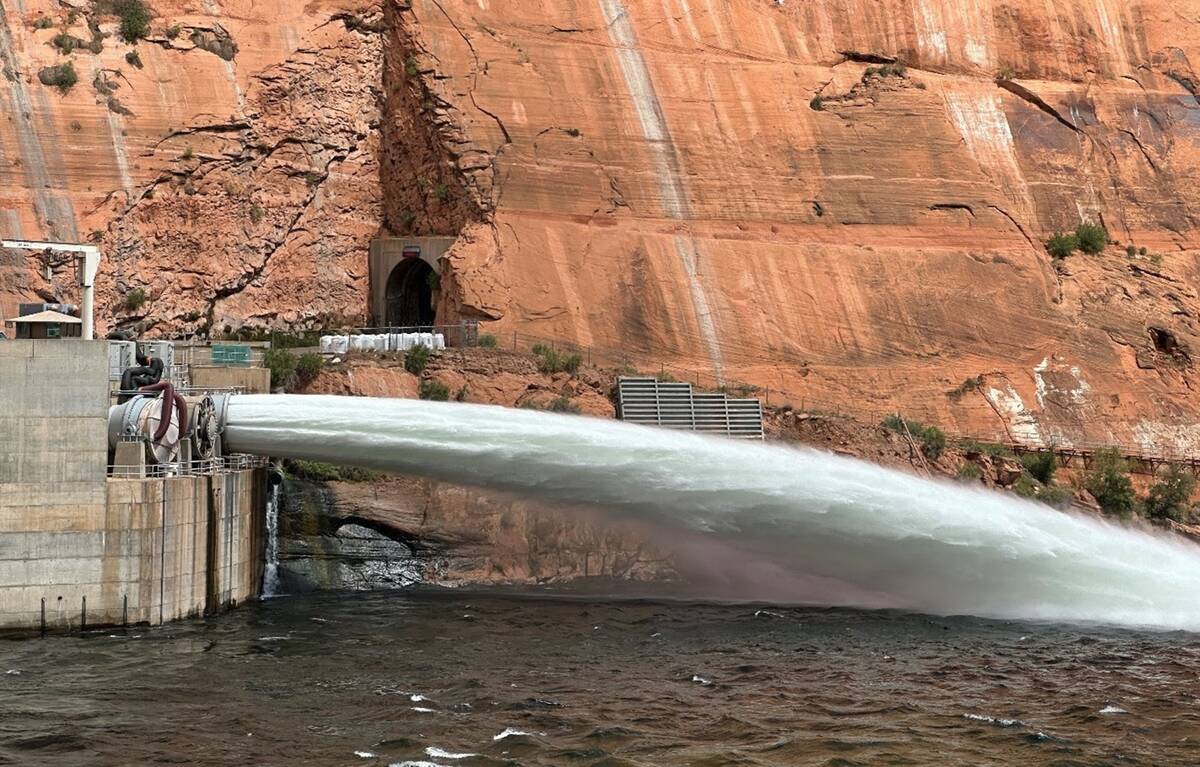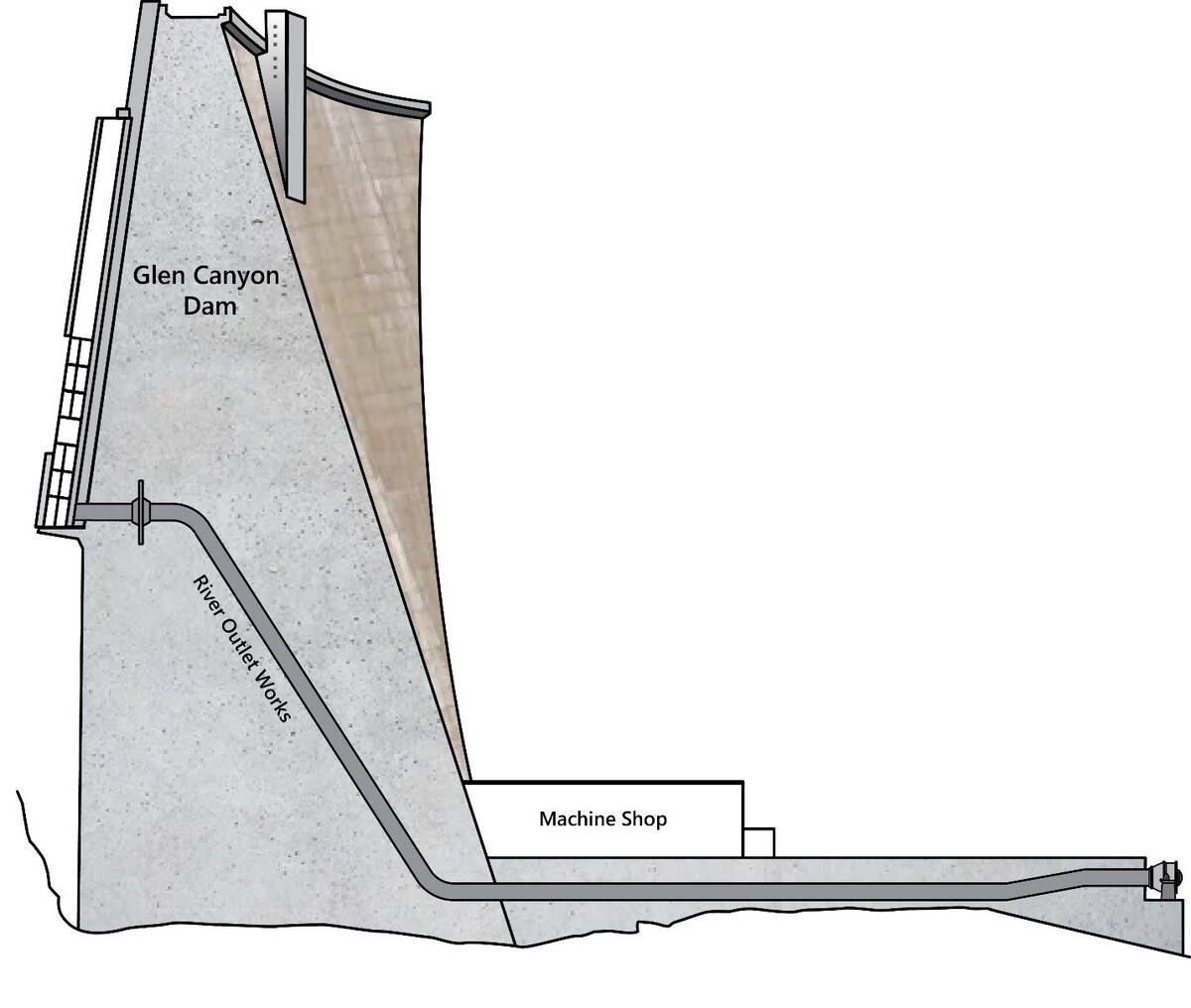Robots are relining key Glen Canyon Dam tubes
Sixty years after workers hand painted the lining of four tubes at Glen Canyon Dam, the Bureau of Reclamation is using federal funds for a needed refresh. This time, it’s with the help of robots.
The dam on the Colorado River in northern Arizona impounds Lake Powell, the country’s second-biggest reservoir. It’s upstream of Hoover Dam and Lake Mead, which provides Southern Nevada with 90 percent of its drinking water.
Lake Powell is an important water source for Colorado River states, and Glen Canyon Dam produces enough electricity to power nearly half a million U.S. households, according to the Grand Canyon Trust.
The Bureau of Reclamation project, fueled by Bipartisan Infrastructure Law funds, will provide a needed update to the dam’s four river outlet works. Those are steel pipes that move water downstream into the river, bypassing the power plant when it cannot release water.
“It is Reclamation’s duty and obligation to operate all of our facilities — including Glen Canyon Dam — in a safe manner and to maintain reliable downstream releases to meet the nation’s water and energy needs,” said Wayne Pullan, the federal agency’s Upper Colorado Basin regional director, in a statement.
As the reservoir’s levels dip, there may be more use of these tubes when generating power is not possible, according to the bureau. The tubes also have been used more during what the agency calls “cool flow mix,” when it releases cooler water to disrupt populations of smallmouth bass, a fish it says may further imperil the threatened humpback chub species below the dam.
For years, humans patched up the coal-tar coating when needed. Now, a robot sprayer will apply an epoxy primer and polysiloxane topcoat, which Bureau of Reclamation officials said is widely studied and used in dams across the country.
Work on the project is expected to be completed in one year, officials said.
Contact Alan Halaly at ahalaly@reviewjournal.com. Follow @AlanHalaly on X.


















